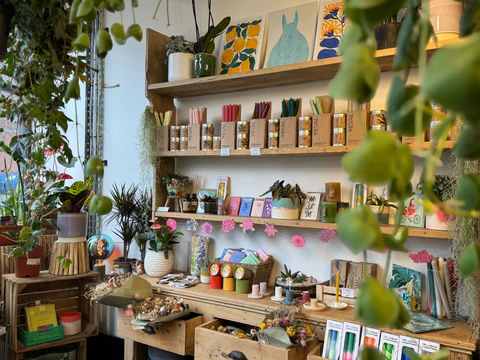Important Information
If you have any questions, please check out the below or get in touch via our contact formWe're devoted to sending our customers quality plants with the best service around. Every plant is backed by our 7-day guarantee, so they arrive in good health.
Our team takes extra steps when prepping plants for transportation, but they're still sensitive to changes, so there may be minor cosmetic issues. We always aim to photograph and disclose any flaws before shipping, but a living creature travelling across the country in a box can take a hot minute to adjust to its new life.
If you have any issues within 7 days of receiving your order, holler at our customer support team on our contact form with your order details and some pics of the issue. After the guarantee has expired, though, we can't refund as we can't guarantee care and environmental factors. If you repot the plant during the 7 days, the guarantee is void.
We have been sending plants up and down the country for many year now and we like to think we have our way down to an art.
We protect the plant from falling out of the soil with tissue paper and tape if needed, then we wrap the plant in corrugated cardboard, and sometimes we protect the leaves with extra tissue paper if required. This is then placed into a box and if there is any empty space, we fill this with void fill to stop the plants moving around inside the box. Sometimes we will write a note on your packing slip to water the plant on arrival, so please look out for this. This is due a freshly watered plant going in a box will not only be soggy, but as the plant is in darkness this can sometimes make the plant unhappy when just freshly watered.
If your plant arrives to you unhappy, please send us a photo of the plant and packaging if relevant straight away, so we can advise you.
Online orders are packed and dispatched within a few days. Usually depending on volumes, we aim to get your order dispatched within 1 working day. We have collections from Royal Mail 6 days a week so deliveries tend to be speedy.
Our standard parcel delivery service is £4.99 for Royal Mail Tracked48, you can upgrade to Tracked24 for £2.50.
We do offer a Tracked48 Large Letter option for £2.99, and Tracked24 for £1 extra, but this only applies to products less than 2.5cm thick.
*Deliveries 7 days a week only included Tracked24 parcels.
Link to your shipping policy
We get a lot of boxes, packaging and whatnot at Sprouts from all our various supplier's deliveries. We re-use this packaging material where possible, plus we take in donations from local businesses and customers to our shop to avoid excess packaging going to landfill. Sometimes your delivery might look a little different, or come in a branded box from another company, but rest assured the items inside are carefully packed with love and attention inside. We use paper tape and all our branded materials included are fully recyclable. Sometimes we use polystyrene, bubble wrap or plastic wrap in the packaging, all these items are not new and where possible, please use them again.
We have partnered with Zedify to offer low-carbon deliveries in Central Bristol for £6.99.
Zedify collect and deliver orders from us Monday - Friday and will usually deliver your order the same day its collected. If you place your order before 11am, we will aim to get it collected the same day but this isnt always possible. When you have received your dispatch email, Zedify should be delivering your order the same day, anytime before 6pm.
We cannot give an idea of time, but if you would prefer delivery on a certain date (Monday - Friday) please get in touch or leave a note at check out with your preferred delivery date and we will do our best to accommodate your request.
Zedify deliver to the following postcodes BS1, BS2, BS3, BS4, BS5, BS6, BS7, BS8 (1, 2, 3A - 3N, 4), BS9 (1,3,4).
Select click and collect at checkout to collect your order from our Bristol shop.
You will get an email when your order is ready to collect, where possible please come and collect your order the same day as we have limited space. If you are going to collect your order at a later date, please let us know in the message box at check out so we know when to expect you. Some items such as gift sets, kits and pre-order items may not be ready to collect the same day, again please let us know what day you would like to collect and we will let you know if there's any issues.
We do not offer free returns, but if you are unhappy with your delivery, please get in touch. If your parcel or order has been damaged, please take photos and send these over to our team so we can look into this for you.
If you have ordered an item and you would like to exchange it, we should be able to do this for you. There may be an extra charge for delivery, but get in touch to discuss. For plants there is a 7 day return policy and 30 days for everything else, apart from sale items which are none returnable.
You can return or exchange in our Bristol shop for free.
Check out The Sprouts Blog
Sprouts insights to house plants, gardening, our favourite brands and plant hire case studies.














